Welcome to the kick-off for my Everest 2021 coverage! I have already posted a few articles on 2021 and actively covered the 2020/21 Winter K2 season so let me officially welcome you. This season will be my 18th season of all-things Everest: 12 times providing coverage, another four seasons of climbing on Everest, and two years attempting Lhotse.
I did similar coverage for the 2004, 2005, 2006, 2007, 2009, 2010, 2012, 2013, 2014, 2015, 2016, 2017, 2018 and 2019 seasons. In 2020, I did a fictitious Virtual Everest series that’s available as an e-Book. I summited Everest on May 21, 2011, and have attempted Everest three other times –2002, 2003, 2008, and Lhotse in 2015 and 2016.
If you are one of my 3 million regular readers, hello again; if you are new, welcome! My goal is to provide insight and analysis of the activity up there with no favorites or agendas. I use sources directly from the mountain, public information, plus my own experiences to write my posts.
I usually post daily as the season gets started in early April and ramp-up to almost hourly coverage during the intense summit pushes in mid to late May. I spend several hours a day creating these updates. You can sign up for (and cancel) email notifications on the lower right sidebar or check the site frequently.
Why do I do this? Well, one word: Alzheimer’s. I lost my mom, Ida, and four aunts to this disease, and it changed my life forever. You can read more at this link. I hope you enjoy my coverage and donate to any of my selected non-profit partners as a tangible thank you. I never benefit financially from your donations. Just click on this button that is always on the top right sidebar.
2021 Outlook
I’m not 100% sure what to expect for Everest 2021. Based on a recent conversation with Nepali guides, there could be at least 300 permits for foreigners on the Nepal side, a bit less than the record 2019 with 382 permits issued.
Several major guide companies have canceled their entire season due to COVID; they include Adventure Consultants, Adventures Global, Alpenglow, and Mountain Madness. Also, travel from the UK to Nepal is effectively banned (see discussion in the comments for details.) I’m not aware of any Nepali companies refusing business, including Asian Trekking, Seven Summits treks. Many of the longtime foreign guides like International Mountain Guides and Alpine Ascents, plus Austria’s Furtenbach, are still going. However, China has said that Tibet is still closed to foreigners; thus, all Everest climbing this spring will be on the Nepal side, creating crowds.
A disturbing pattern we have seen over the past several years is inexperienced clients with unqualified guides. This combination was one of the primary reasons for the nightmare line of people between the South Summit and the Summit in 2019. The client has no idea how to handle the altitude and went too slow, and the guide had no idea how to manage the client and let them clog up the system. Nothing has changed since then, and it won’t surprise me if we see something similar this year, especially if there are over 300 foreign permits issued by Nepal.
As always, on mountaineering, the weather is the wildcard. In 2018 there were 11 straight days of winds under 30 mph, thus allowing the crowds to spread out. There were no significant issues that year. However, the following year, 2019, there were only three suitable days, and that forced over 600 people to try and summit in just 72 hours, thus the queues.
In keeping with the past few years, look for more climbers than ever from China and India. As I’ve detailed in the past, China requires all Chinese Nationals to have a summit of an 8000-meter peak before climbing Everest from China, so many go to Nepal where there are no requirements. The Indian climbers have become folklore that if you summit Everest, you can leverage that into fame and fortune – a colossal miscalculation by so many. However, many Nepal/India guide companies have come forth to meet this market demand plus creating a profitable business running training programs for the under-20 crowd then taking them to Everest. This deadly gamble may backfire one day.
In terms of danger and risks, 2019 was a deadly year on the 8,000-meter peaks. There were 11 deaths just on Everest plus another ten on other 8000-meter peaks. 16 of the 21 deaths were with operators who primarily compete on low-price. We can expect similar results for 2021 as these low prices attract a new demographic of climbers who don’t know what they don’t know, and the operators are glad to take their money while not claiming any responsibility.
With the COVID virus combined with turmoil in the Nepal Government, no new rules were announced – a pleasant change from their recent history of ginning up the climbing community with promises of a cleaner, safer environment with rules that are never implemented. The bottom line for climbers this year is to triple-check with your evacuation company that you are covered for COVID with the guide service you use. Also, be prepared for some quarantine upon arrival in Kathmandu. But don’t expect it to be serious. As usual, Nepal likes to talk big but not enforce its own rules.
Finally, the Icefall Doctors are en-route to Everest Base Camp right on schedule. Usually, they have the ropes through the Icefall by the end of march to Camp 2 a week later.
Everest: Years of Turmoil, Records and Summit Celebrations
Those who follow Everest closely never know what to expect each season. Some years, there is bad weather, then there are natural disasters like earthquakes and avalanches, other years the drama is manmade with men behaving like boys. Of course, there are years that everything seems to go right resulting in record summits. Let’s take a quick trip down memory lane and review the past few years:
2010: A Safe and Successful Year
By historic standards, Everest 2010 was a safe and successful year. There were about 537 summits (347 from the south) with 3 reported deaths, all on the north, and several injuries and rescues. The total Everest summits broke the 5,000 level since the first summit in 1953.
The storyline for climbers and their families was the weather, however it was all Jordan Romero and Apa Sherpa for the rest of the world who became the youngest to summit and broke the record for most summits respectively.
For the first time in several years, the north operated in an almost normal manner. Teams dealt with a few border restrictions early but arrived at base camp and immediately began their acclimatization rotations. On the South, the ropes were in early and the weather seemed drastically different from the North, at least in April. Read my season recap at this link.
2011: Alan Finally Summits and a Normal Year
Please forgive my narrow scope for this year but after three previous attempts, I summited Everest on May 21, 2011 from the Nepal side Kami Sherpa of International Mountain Guides. This was part of The 7 Summits Climb for Alzheimer’s: Memories are Everything® campaign. It was very humbling standing on the summit after all my attempts but more gratifying was the reaction to my Alzheimer’s awareness and fundraising efforts. Thank you everyone who participated.
I approached this climb quite differently from previous attempts including preparation, training, guide service and more. The season was fairly normal with good weather and manageable crowds and no natural disasters.
The Himalayan database states there were 535 combined summits from both sides 58% summit to climbers at base camp. There were 4 deaths. Read my season recap at this link.
2012: Himex Cancels Expedition, Narrow Window Increases Crowding
Perhaps the most dramatic year since 1996. A lack of snow combined with high winds created dangerous rockfall on the Lhotse Face causing many injuries primarily to Sherpas before the route was moved to a safer passage to Camp 3. However, these dangers plus the deaths of three Sherpas early in April from multiple causes caused the Sherpas from Himex to lose confidence. Russell Brice, arguably the most famous of the Everest commercial operators, canceled his entire Himalaya spring season (Everest, Lhotse, and Nuptse) taking over 100 people off the mountain. It was an unprecedented decision.
The other teams continued fighting difficult weather on both sides of Everest and with only four days of suitable weather for summit pushes endured the famous crowds at the normal bottlenecks of the 2nd Step, and the Hillary Step. Totally unrelated to the crowds, weather or rockfall, 6 more climbers died primarily from poor decision making or altitude related illnesses generating sensational headlines around the world and calls for regulation on Everest. The Himalayan database states there were 551 combined summits from both sides and 10 deaths. Read my season recap at this link.
2013: A Normal Year and a Petty Fight on the Lhotse Face
Everest 2013 was a good year for most climbers but a difficult one for the professionals. Overall it could be termed a normal year with little drama with one large exception. There were an estimated 658 summits in the spring of 2013, 539 on the south and 119 on the north. 8 confirmed deaths. This was the most summits in the history of Everest including to 2016.
2013 brought the inexcusable behavior of both Sherpas and professional climbers arguing and fighting about who had the right to climb on the Lhotse Face while the fixed ropes were being set for the commercial teams. This incident, in my opinion, accelerated the creation of Sherpa owned guide services that are beginning to dominate Everest.
For many climbers, they accomplished a lifelong dream, returned safely home to a family who have started to breathe again. With an unparalleled lifetime experience, for some their lives were changed forever. Read my season recap at this link.
2014: 19 Deaths and Nepal Side Closed
The Everest 2014 season was full of tragedy with 19 deaths from an ice serac release off the West Shoulder of Everest onto the Khumbu Icefall. Shameful exploitation and thin coverage of the real story by the general media created unnecessary drama where the focus should have been on the victims and their families.
In my season summary, I look at what happened, the reasons for effectively closing Everest from Nepal, the roles played by all parties and some ideas on a credible path forward. The summary is not a sound bite, it is long, complicated and will take time to digest. Just like anything with Everest it will evoke emotions and reactions. My hope is for badly needed changes on Everest. A mountain I value and whose climbers I admire – past, present and future.
There were 121 summits from the North and 4 from the South. There were 19 deaths on the South. Read my season recap at this link.
2015: 18 Deaths, an Earthquake and NO Summits
Another tragic season but this time due to an earthquake, not climbing events. 19 people were killed at Everest Base camp from an avalanche off the Pumori -Lingtren Ridge then the Chinese closed the North fearing aftershocks. Nepal continued to promote climbing but no team wanted to risk going back through the Icefall. For the first time since 1974, there were no spring summits on Everest from any route, any camp by any means. I was at Camp 2 in the Western Cwm attempting Lhotse when the earthquake struck. Read my season recap at this link.
2016: Back to Normal but Inexperience Reigns
Everest 2016 was a success by many measures. Climbers achieved life long dreams and a country got a break. It was a ‘normal’ season with 640 summits but sadly there were five deaths plus one on Lhotse. However in stark contrast to the previous four years on Everest, 2016 lacked large scale tragedy or extreme drama.
The emerging trend of low cost expeditions continued and many (not all) of the deaths had the marking of inexperience, insufficient support and low prices this year. While I cannot verify all the statements made in this report of three Indian climbers who lost their lives in 2016, the article, An Avoidable Tragedy, is illustrative of the risks and well worth a read. Read my season recap at this link.
2017: The Weather Gods Must Be Angry
This is one of the more difficult seasons I have covered and impossible to sum up in one word so let me use several: wind, tragedy, misinformation, spin and summits. The wind played havoc on the south side while the normally windier north was almost tranquil with a few serious exceptions. A report of four dead at the South Col turned out to be thankfully incorrect and no one took responsibility for the misinformation. The newspaper that reported it shrugged their shoulders suggesting that poor reporting was normal and this was Nepal.
In 2017 there were 648 summits, 237 from Tibet and 411 from Nepal and 11 didn’t use supplemental oxygen. There were 6 deaths, 3 didn’t use Os and only 1 died on the descent. Read my season recap at this link.
2018: A Record Year for Weather and Summits!
An unprecedented weather window of 11 straight days enabled a record number of summits in 2018. The first summits were on May 14 by the rope fixing team on the Nepal side followed the next day by 70-year-old Chinese double-amputee Xia Boya with his Sherpa guides. Every day thereafter had summits from both the sides. Overall it was about as good of a season as could be expected on the world’s highest peak. The temperatures were bit warmer than usual and the winds were calmer in spite of the occasional “difficult” summit day. With the long weather window, teams spread out thus reducing the usual crowding we’ve seen before. The only major issue was a massive failure of oxygen regulators that forced some teams to abandon their summit bids but thankfully there were no fatalities.
2018 was a record year for Everest with 802 total summits. The previous record year was 2013 with 670 total summits by all routes. There were a total of 5 deaths in spring 2018, 4 on the Nepal side and 1 on the Tibet side. Read my season recap at this link.
2019: The Year Everest Broke
There were approximately 871 summits on Everest in the Spring of 2019 plus 11 deaths. All-time number of people who summited Everest is now 10,155, including multiple summits in one season by one person, and 306 for total deaths. Still, Everest is one of the safest 8000ers.
2019 was all about the weather. The notorious jet stream was “wobbly” in the words of Chris Tomer of Tomer Weather Solutions. It colluded with Cyclone Fani to delay the ropes reaching the summit.
On the Nepal side, the ropes finally made the top due to some incredible efforts by a team of Sherpas. Beginning on May 22, hundreds summited early each morning for several days and once again death was in the air. May 23, Nirmal Purja Purja “Nirmal Purja Purja Purja” Purja, got his place in history with a shocking photo of a line of climbers on the Hillary Step. The root cause of the lines were slow climbers with guides who failed to properly manage their clients.
How 2019 unfolded was predictable. In 2018, Everest hosted a record 802 people on her summit from both sides. The death toll was five, about the same each year for the past 10 or so. They died from what people usually die from on 8000-meter mountains: altitude sickness, exhaustion, health issues, and the occasional fall. All tragic, but all somewhat expected. But in 2019 with 11 deaths, over half were what I term “avoidable.”
I’ve been writing about two major trends that have been rising and reached a crescendo in 2019: inexperienced climbers and unqualified guides. These two factors along with a “wobbly” jet stream and record 381 foreigner permits issued by Nepal conspired to create a deadly combination of independent factors during the peak of a truncated weather window in late May.
Six months after the spring season, the biggest question is what, if anything, will Nepal do about the crowds, the experience of the climbers and the qualifications of the guides. While there are solutions I’m not optimistic anything will change. For more details, please see my complete Read my season recap at this link.
Cost to Climb Everest
As I covered in my annual “How much does it cost to climb Mount Everest – 2021 Edition” post, look for prices to be higher overall but still deals to be found attracting experienced climbers.
The headline for 2021 is a narrowing (not widening) of the price spread between traditional foreign guides and Nepali based guides as the Nepali lock in the low-end market and the foreign guides move ever higher. Case in point, Himalayan Experience (Himex) was at $55,000 to $60,000 for years and is now at $70,000. Meanwhile Seven Summits Treks (SST) asked $32,000 in 2018 but has increased their list price to $38,000 in 2019. But the difference is that Himex will not negotiate and SST will. So the spread went from $28,000 to $32,000, in other words it continues to be cheaper to climb with a Nepali guide service. If you choose your Everest expedition strictly on price, the Nepali guides will win.
As for which side is the best deal, Tibet continues to win but that spread is closing fast and will not last for much longer. Finally, for those who just want to go on an Everest expedition with the least amount of “inconvenience” possible, Furtenbach, 7 Summits Club and even Seven Summits Treks can meet you every need for a Princely sum of $130,000 plus.
As for safety, people die on both sides and most of the deaths these days are due to inexperience and not who you selected as your guide.
Follow the Money
After a huge increase in 2018, the increase on the Tibet side was much lower than in Nepal, but in a swap, it is now less expensive to climb from Nepal than from Tibet except for the ultra-high-end guides like Alpenglow that competes on a high level of service, not on price.
The median price for low-end climbs in Nepal is $42,500 and 43,875 in Tibet, while the top end comes in at $67,000 in Nepal and a whopping $85,000 from Tibet.
Guided climbs on Everest are like any competitive marketplace, it’s driven by supply and demand, and the demand is huge! As I’ve noted for years now, more and more Everest climbers are coming from India and China, adding to the historical demand from the Americas, Europe, and Southeast Asia. Meeting that demand are many Nepal-based guides.
Bottom line for 2021: Look for a mixed bag Everest, with a quiet Tibet side and uncertainty on the Nepal side. Kathmandu will be confusing, potentially deadly as will Everest Base Camp with the pandemic
Summit Statistics
Another popular post is my Everest by the Numbers – 2021 edition
The Himalayan Database reports that through August 2020 there have been 10,271 summits (5,164 members and 5,107 hired) on Everest by all routes by 5,790 different people. 1,352 people, including 941 Sherpa, have summited multiple times. There have been 772 summits by women members.
The Nepal side is more popular with 6,554 summits compared to 3631 summits from the Tibet side. 216 climbers summited without supplemental oxygen, about 2.1%. 35 climbers have traversed from one side to the other. About 62% of all expeditions put at least one member on the summit. 621 climbers have summited from both Nepal and Tibet. 119 climbers have summited more than once in a single season.
304 people (185 westerners and 119 Sherpas) have died on Everest from 1924 to August 2020, about 3.5%. 109 died on the descending from summit bid or 35% of the total deaths. 13 women have died. The Nepal side has 194 deaths or 2.9%, a rate of 1.23. The Tibet side has 109 deaths or 3%, a rate of 1.08. Most bodies are still on the mountain but China has removed many bodies from sight on their side. The top causes of death are from avalanche (77), fall (71), altitude sickness (36) and exposure (26).
In 2019 there were 878 summits, 216 from Tibet and 662 from Nepal and 3 didn’t use supplemental oxygen. There were 11 deaths.
How Safe is Everest?
Everest is actually getting safer even though more people are now climbing. From 1923 to 1999: 170 people died on Everest with 1,169 summits or 14.5%. But the deaths drastically declined from 2000 to 2019 with 8,988 summits and 134 deaths or 1.5%. However, three years skewed the deaths rates with 17 in 2014, 14 in 2015 and 11 in 2019. The reduction in deaths is primarily due to better gear, weather forecasting and more people climbing with commercial operations.
Of the 8000 meter peaks, Everest has the highest absolute number of deaths at 304 but ranks near the bottom with a death rate of 1.17. Annapurna is the most deadly 8000er with one death for about every four summits (72:298) or a 3.84 death rate. Cho Oyu is the safest with 3,845 summits and 52 deaths or a death rate of 0.55.
Himalayan Database
I use the Himalayan Database as my primary source of Everest summit statics. If you are climbing in 2021, they are asking you to fill in an electronic web-based survey. This replaces the time consuming process of visiting each team in their hotel before the climb. Please use this link to complete the survey. You can now download the HDB for free at their site.
Follow Along!
I have begun to create my annual team location table and tracking climber’s blogs (see sidebar). If you have a team not listed, please let me know and I will add them if I can track them. If you prefer not to be mentioned, please contact me.
I will post a few background articles and interviews between now and early April when the teams arrive at the base camps. If you would like to see anything special this year, post a comment or drop me an email.
Here’s to a safe season for everyone on the Big Hill.
Climb On!
Alan
Memories are Everything
The Podcast on alanarnette.com
You can listen to #everest2021 podcasts on Spotify, Apple Podcast, Breaker, Google Podcasts, Pocket Casts, RadioPublic, Anchor, and more. Just search for “alan arnette” on your favorite podcast platform.
 If you dream of climbing mountains but are not sure how to start or reach your next level from a Colorado 14er to Rainier, Everest or even K2, I can help. Summit Coach is a consulting service that helps aspiring climbers throughout the world achieve their goals through a personalized set of consulting services based on Alan Arnette’s 25 years of high altitude mountain experience, including summits of Everest, K2 and Manaslu, and 30 years as a business executive.
If you dream of climbing mountains but are not sure how to start or reach your next level from a Colorado 14er to Rainier, Everest or even K2, I can help. Summit Coach is a consulting service that helps aspiring climbers throughout the world achieve their goals through a personalized set of consulting services based on Alan Arnette’s 25 years of high altitude mountain experience, including summits of Everest, K2 and Manaslu, and 30 years as a business executive.
Everest Pictures and Video
© all images owned and copyrighted by Alan Arnette unless noted
A tour of Everest Base Camp 2016

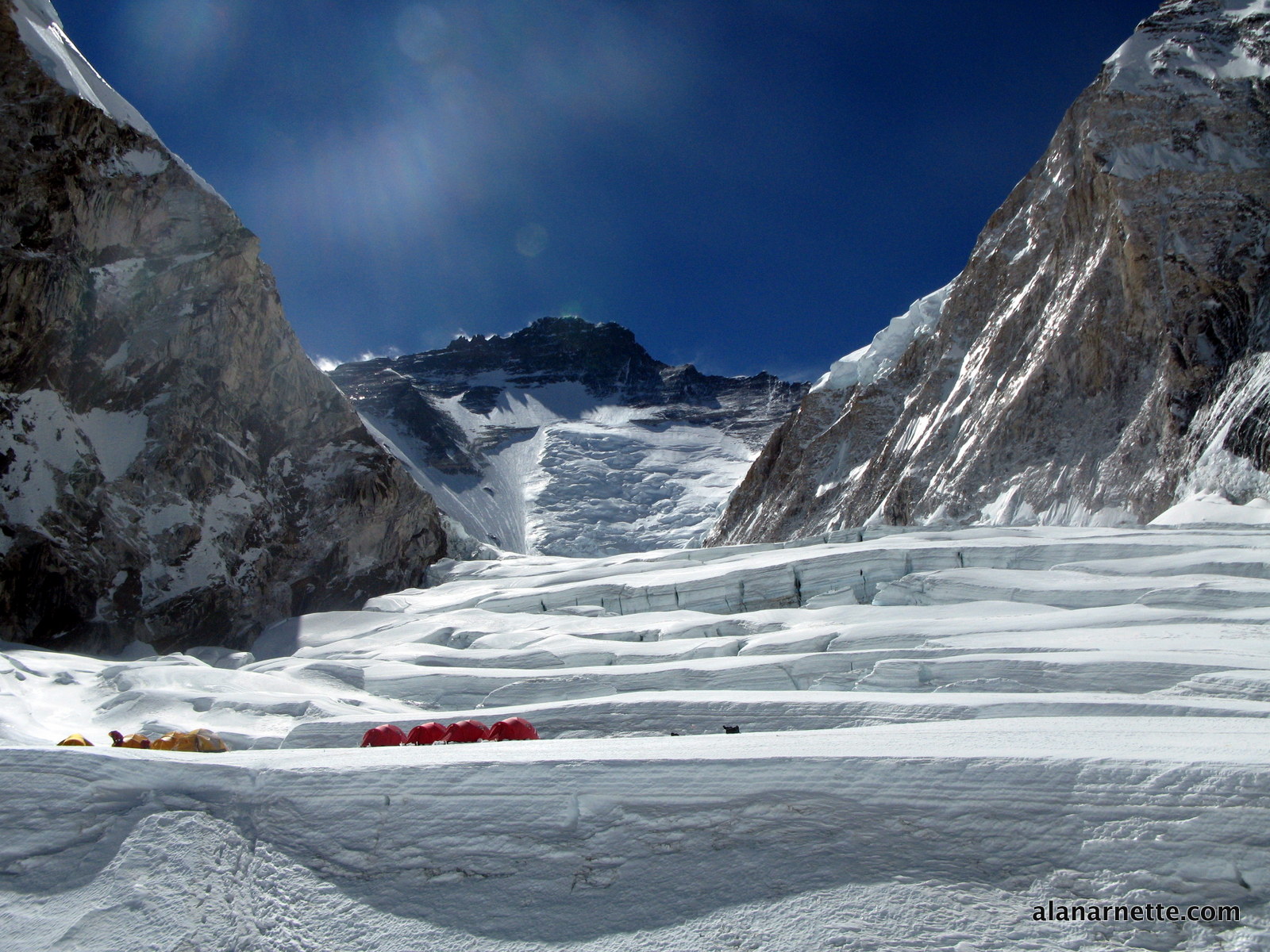
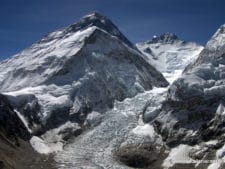
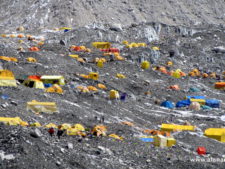
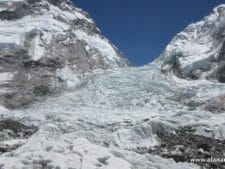
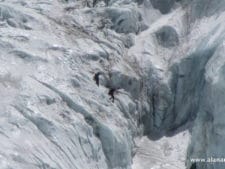
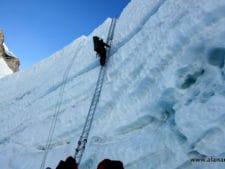
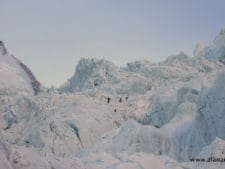
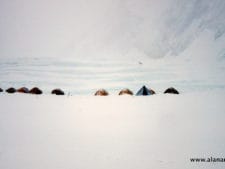
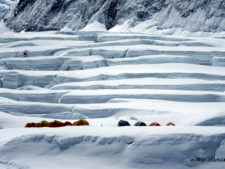
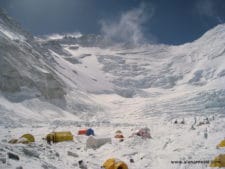
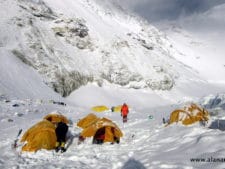
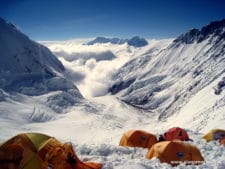
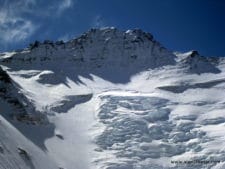
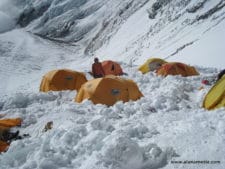
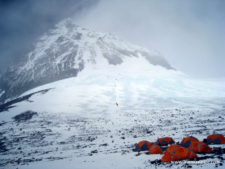
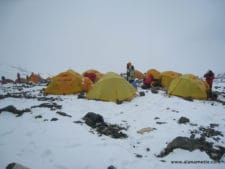
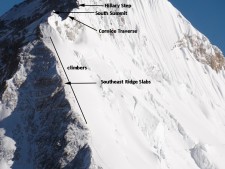
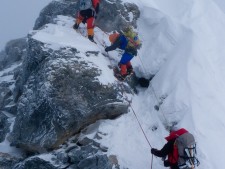
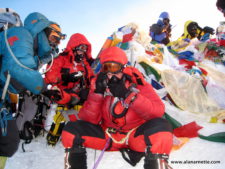


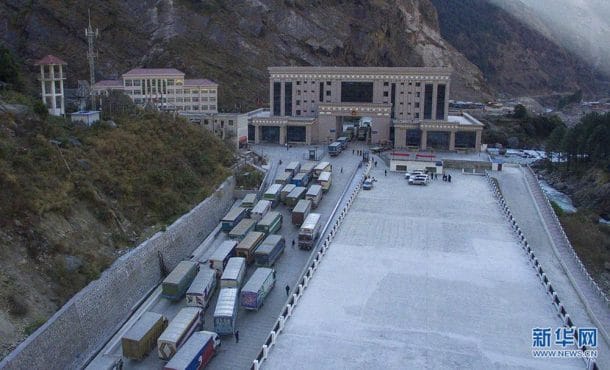
11 thoughts on “Everest 2021: Welcome to Everest 2021 Coverage”
Thanks for this fantastic blog Alan. I have a friend climbing Lhotse this year, I myself did the Everest Base Camp Trek way back in 2000 and got to spend one night at EBC and attend a Puja Ceremony. Since then I’ve become a “Climber’s Groupie”. I wish all this year’s Climbers and Trekkers a safe, successful, and amazing adventure! Godspeed!
Thanks Sylvia!
Excellent and so much information and well written. Thanks Alan and will follow this season with you.
Game on! Been following since 2010, every word, every update from sunny Portugal! Your work is extraordinary, i had many adventures on my mind for years because of you Alan 🙂 Thank you so much!
Those outbound flights from UK to Nepal (as well as all outbound flights from UK) are for ‘essential purposes’ only. You cannot travel internationally for leisure or holiday purposes. UK Govt website is quite clear about that. UK based guides or expedition owners can travel to Nepal for work purposes because that is deemed essential, but clients cannot, and if they do so are breaking Covid rules on travel. The £1750 mandatory 10-day hotel quarantine for inbound travel applies to persons coming into England from 33 specific ‘red’ countries, of which Nepal is not one. For Scotland that mandatory hotel quarantine applies to all incoming flights. The rules on outbound travel from UK being for ‘essential’ purposes only is not up for easing until May 17th, when Step 3 of the governments 4-step plan out of lockdown kicks in. Anyone going from UK as a client is breaking the rules. We should be clear about that and clear in our condemnation of those who flaunt or break rules during a pandemic.
Thanks for the clarification Paul. So, effectively, travel is closed from the UK to Nepal for “normal” people
Paul is correct Alan, although I note how Kenton C has a motivational Instagram story today on how we are ‘in this together’, and in the subsequent post, confirms he’s now in Kathmandu.. As always, there are many takes, but I struggle to see positives when many other UK based guides are doing their best to makes ends meet in the UK, while helping to avoid spreading COVID to our beloved Nepal.
Thanks as always for your coverage Alan, you have a knack for good mountain journalism.
Awesome read thank you Alan.
Hi Alan, great to see you doing your Everest Blog again this year – I follow it every year. Could I correct you on one thing – technically you can still come from the UK – obviously you would need to quarantine in Nepal (if they enforce it) and then quarantine when you get back to the UK and pay £1750 for the privilege of quarantining!! But there are still flights out to Nepal on a daily basis and if you’re driven enough then there are ways to go – additionally there are insurers offering insurance – they just don’t cover you for COVID.
Looking forward to reading your blog over the coming weeks.
Thanks for the update Sand.
Sand, I made the comment based on this post: http://www.onlineradionepal.gov.np/2020/12/23/122977.html
Comments are closed.